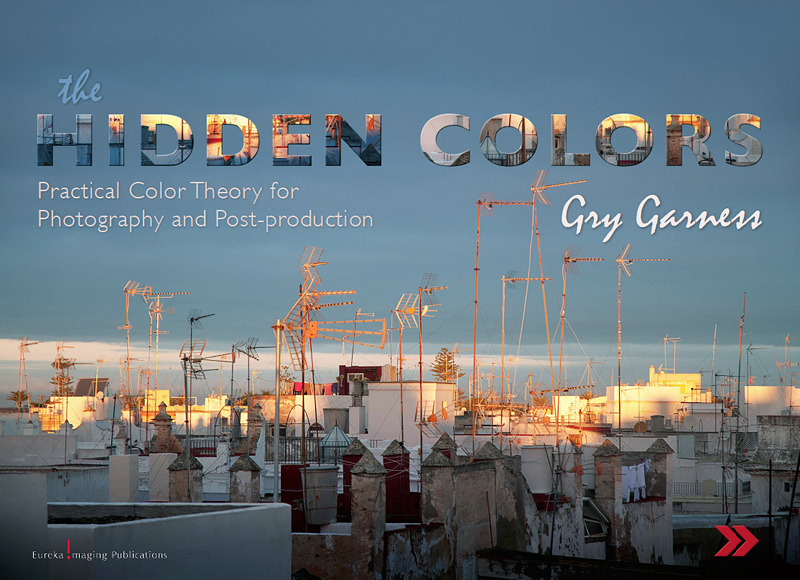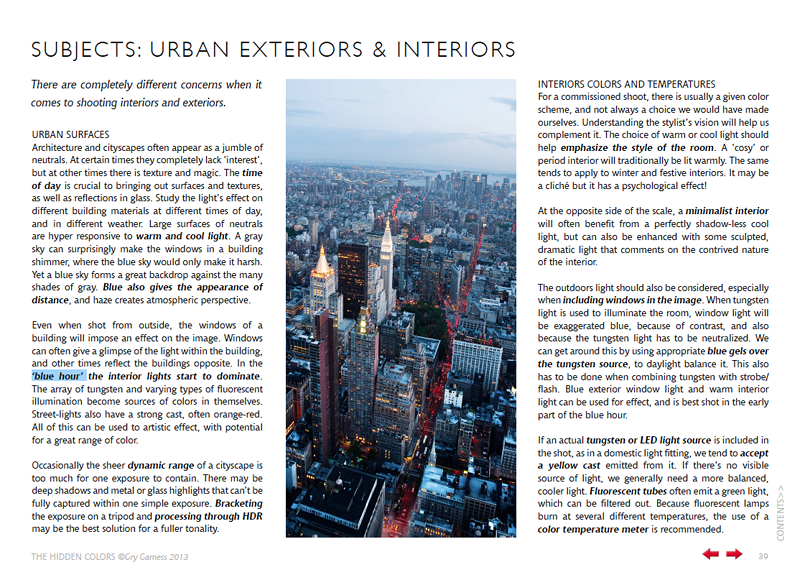eBook Review: Hidden Colors, Practical Color Theory for Photography and Post-Production
Hidden Colors, Practical Color Theory for Photography and Post-Production is an advanced, interactive, multimedia course in color that stretches the .pdf format to its full-capabilities.
As with her other educational eBooks, author Gry Garness offers an extremely comprehensive look into the topic and uses excellent visual examples at literally every opportunity.
Reading the Hidden Colors eBook brought me right back to my Art 302 Color course at UW-Madison. My course was taught by accomplished artist, superb colorist, and Professor at UW-Madison, Nancy Mladenoff. Though I took the course nearly eighteen years ago, I remember her sense of color theory and color matching was very, very keen from years of training and practice. Software applications like Adobe Photoshop make color adjustments far faster and easier than having to mix paints like many professional artists have done in school, yet the “analog” practice of wet paint undoubtedly sharpened our sense of color.
This is not casual reading. The subject of color theory is quite sophisticated and this is a high-level textbook which can be utilized by everyone from beginner to professional colorists. That said, Gry is excellent at explaining the concepts so people new to color theory can use Hidden Colors as an introductory text, but the content will take some time to grasp (i.e. rereading).
On a completely separate rant note unrelated to my review, I’ve recently noticed a trend in photography toward unnatural HDR, supersaturated colors, and heavily-softened (filtered) skintones in publications which should know better. I’m not going to out the publications here, but the travel, lifestyle, and fashion magazines are now publishing photos so overprocessed, they would have screamed “amateur” just a year or two ago. I guess in the age of instagram and pinterest, publishers are scrambling to compete with everyday social media photography. I personally prefer the understated approach to processing with an emphasis on a flattering color palette, but everyone has their own style.
I think once you are introduced to color in a scholarly, practical approach–your favorites films and photographs will take on a new appeal and understanding. I won’t go into the details of my favorites, but I could have lengthy conversations in known-terms about moods, color palettes, color styles, etc. used by filmmakers and still photographers who create scenes and even entire films with carefully-crafted practice. Look for their names in the credits.
Hidden Colors, Practical Color Theory for Photography and Post-Production is available as a download from Eureka! Publishing. I was gifted a copy of the eBook previous to my review.
Other books in her tutorial series include: Beauty Retouching Techniques in Photoshop and Digital Retouching for Fashion, Beauty & Portrait Photography.



